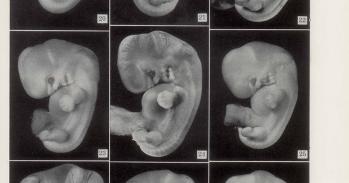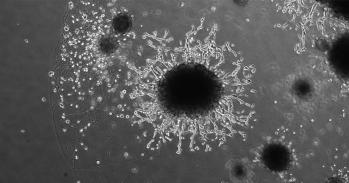
Scientists have discovered a mechanism which raises blood pressure in pre-eclampsia, a potentially deadly condition which occurs during pregnancy.
Scientists have discovered a mechanism which raises blood pressure in pre-eclampsia, a potentially deadly condition which occurs during pregnancy.
This research is of the highest quality and offers real hope for developing strategies to prevent or treat this dangerous condition by targeting the process that these scientists have identified."
Professor Peter Weissberg, Medical Director of the BHF
After 20 years of research, scientists from the University of Cambridge have now cracked the first step in the main process that controls blood pressure. Their findings, published today in the journal Nature, are likely to have significant implications for the treatment of pre-eclampsia as well as high blood pressure (also known as hypertension).
Blood pressure is controlled by hormones called angiotensins, which cause the blood vessels to constrict. These hormones are released by the protein angiotensinogen. Until now, it was not understood how this occurred.
Dr Aiwu Zhou, a British Heart Foundation (BHF) Fellow at the University of Cambridge, who made the breakthrough, said: "Although we primarily focused on pre-eclampsia, the research also opens new leads for future research into the causes of hypertension in general."
To make the discovery, the researchers solved the structure of angiotensinogen with the help of an extremely intense X-ray beam produced by Diamond Light Source, the UK synchrotron. Their results revealed that the protein is oxidised and changes shape
to permit ready access to angiotensinogen by an enzyme, renin. Renin cuts off the tail of the protein to release the hormone angiotensin, which then raises blood pressure.
Taking their lab results into the clinic at the University of Nottingham, the research team showed that the amount of oxidised, and hence more active, angiotensinogen was increased in women with pre-eclampsia.
Professor Robin Carrell at the University of Cambridge, who led the 20-year research project, explained: "During pregnancy oxidative changes can occur in the placenta. These changes, the very ones we have found stimulates the release of the hormone angiotensin and lead to increased blood pressure, can arise as the circulation in the placenta readjusts the oxygen requirements of the growing foetus with the delivery of oxygen to the placenta from the mother."
Drugs currently used to treat high blood pressure - such as ACE inhibitors - focus on the later stages of the mechanism that controls blood pressure. Today's findings, which give insight into the previously mysterious early stages of the regulation process, provide scientists with new opportunities to research novel treatments for hypertension.
Professor Peter Weissberg, Medical Director of the BHF, which largely funded the study, said: "Every year in the UK pre-eclampsia is responsible for the deaths of around six women and several hundred babies. This research is of the highest quality and offers real hope for developing strategies to prevent or treat this dangerous condition by targeting the process that these scientists have identified. And of course, although the researchers only looked at pre-eclampsia in this study, similar strategies may be useful for those people with high blood pressure that is not effectively controlled by current medicines."
High blood pressure frequently affects pregnancy. However, in 2-7 per cent of pregnancies this develops into pre-eclampsia, which threatens the health and survival of both the mother and child. In Britain, it affects about one in 20 women during pregnancy, and every year 50,000 women and 500,000 infants die globally as a result of pre-eclampsia. There is no treatment for pre-eclampsia and often the mother is either induced early or undergoes a Caesarean.
The research was largely funded by the British Heart Foundation, with additional funding provided by the Medical Research Council, the Wellcome Trust and the Isaac Newton Trust.
Photo credit: House of Sims
This work is licensed under a Creative Commons Licence. If you use this content on your site please link back to this page.





